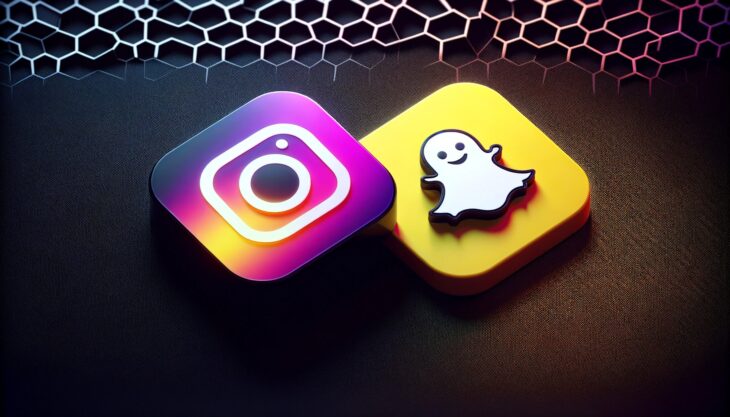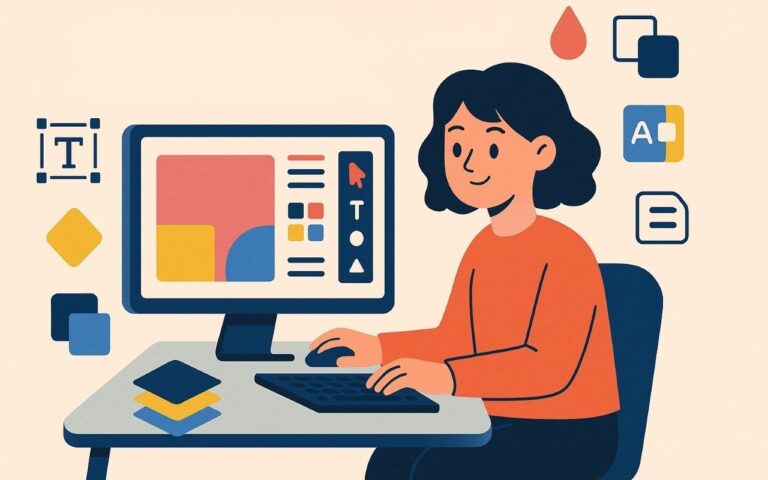Social media, a realm that began as a simple means for virtual interaction, has morphed into a versatile entity, deeply embedded in our daily lives. From its inception in the late 20th century to its current status as a business juggernaut, social media’s journey is a story of innovation, transformation, and societal impact.
In this guide, we will talk about the evolution of social media, its roots, milestones, and its profound influence on personal and professional spheres.
Table of Contents
ToggleARPANET to Early Platforms
The journey of social media began with ARPANET in 1969, a project that laid the groundwork for today’s internet. This network was the first to employ packet switching and TCP/IP, foundational technologies for Internet communication.
The First Platform
In 1997, the launch of the first true social media platform marked a significant milestone. This platform introduced the concept of personal profiles, a cornerstone of today’s social media infrastructure.
Rise of the Giants
Founded in 2002, LinkedIn revolutionized professional networking. By 2020, it boasted over 675 million users, offering a unique blend of professional exchange and career advancement tools.
Myspace
Myspace, launched in the early 2000s, became the most visited website by 2006. It provided a blend of personal profiles, music sharing, and a vibrant social community, setting a precedent for future platforms.
Facebook, emerging in 2004, eclipsed Myspace by 2008. Its universal appeal and adaptability made it a social media behemoth, reshaping how we connect and share information.
The Expansion Era: Diverse Platforms for Diverse Needs
![]()
The Rise of Varied Platforms
By 2020, the social media landscape had diversified. Platforms like Reddit, Twitter, Instagram, Pinterest, Snapchat, and TikTok catered to varied interests, from microblogging to short-form videos.
Mobile Revolution: A Shift in Access
The introduction of smartphones marked a pivotal shift from desktop to mobile, making social media accessible anytime, anywhere. This transition significantly influenced user engagement and content consumption patterns.
Social Media and Business: Marketing, Influence, and Trends
Marketing Evolution: From Ads to Organic Outreach
Marketers quickly recognized social media’s power, leveraging it for both advertising and organic outreach. This evolution transformed marketing strategies, emphasizing authentic engagement and targeted content.
Influencer Marketing: The New Age of Endorsements
Influencer marketing emerged as a powerful tool. Brands began collaborating with social media influencers to tap into specific audiences, combining traditional endorsement strategies with the authenticity of personal influence.
Video Content: The King of Engagement
By 2019, video content had become the leading form of media in content marketing. Its engaging nature and wide reach made it an indispensable tool for marketers and content creators.
Emerging Trends and Predictions
- Paid Subscription Services: As we look to the future, we may see an increase in paid subscription services on social media platforms. This model could offer exclusive content, enhanced user experience, and an ad-free environment.
- Continued Dominance of Video Content: Video content is likely to maintain its dominance, evolving in form and interactivity. Innovations in AR/VR and live streaming might further enrich the video content experience.
Data Security and Privacy Concerns
The future of social media will undoubtedly grapple with data security and privacy issues. Users and regulators are increasingly focused on how social media platforms manage and protect user data.
Pro Tip: You have be aware of the fact that third-party apps that allegedly can show us who is visiting our FB profile are all fake since there is no such option available.
Integration with Emerging Technologies
Emerging technologies like AI and machine learning are set to play a pivotal role in shaping social media’s future. These technologies could personalize user experiences, enhance content delivery, and streamline advertising strategies.
Consistent Evolution
Integration with Daily Life
As we dig deeper into the history and evolution of social media, it becomes evident how these platforms have integrated themselves into our daily lives. They are not just tools for communication but have become crucial for news dissemination, personal expression, and even a source of employment for many.
The Rise of Ephemeral Content
Platforms like Snapchat and Instagram introduced the concept of ephemeral content – media that disappears after a short period. This trend encouraged more spontaneous and authentic sharing, changing how users interact with social media.
The Global Impact
![]()
Social media has had a profound impact on global communication. It has connected people across continents, enabling cross-cultural exchanges and fostering a sense of global community.
Social Movements and Activism
Social media has played a pivotal role in social movements and activism. Platforms like Twitter have become arenas for political discourse, enabling movements to gain momentum and capture global attention.
The Business Side
The Advertising Revolution
The introduction of targeted advertising transformed how businesses reach consumers. Social media platforms, with their vast troves of user data, have enabled unprecedented levels of ad personalization and effectiveness.
The Economy of Attention
In the world of social media, attention is a valuable currency. Platforms are designed to captivate users, leading to the creation of content specifically tailored to retain and engage audiences for longer periods.
The Psychological Effects
- Impact on Mental Health: The history of social media is not without its darker sides. Studies have shown its impact on mental health, with issues like addiction, self-esteem problems, and the feeling of social isolation becoming increasingly prominent.
- The Double-Edged Sword of Connectivity: While social media connects us, it can also create an illusion of connection that lacks the depth and satisfaction of real-life interactions. This paradox is a significant part of its historical narrative.
Regulation and Governance
Data Privacy and Security
As social media grew, so did concerns over data privacy and security. Incidents like the Google+ data breach have sparked global debates on the ethics of data handling by social media companies.
Calls for Regulation
There have been increasing calls for regulation of social media platforms, focusing on issues like misinformation, hate speech, and the ethical use of personal data.
Cultural Changes
- Influencing Lifestyle and Culture: Social media has influenced lifestyle and culture, dictating trends, fashion, and even language. The virality aspect of social media content has the power to rapidly spread new ideas and trends globally.
- The Shift in Content Consumption: The way people consume content has radically changed. The rise of short-form video content, for instance, reflects a broader shift in user preferences towards more digestible and engaging formats.
FAQs
How has social media influenced traditional media outlets like newspapers and television?
It has significantly influenced traditional media by accelerating news dissemination and promoting user-generated content. Many traditional media outlets have adapted by maintaining an active social media presence and integrating feedback from these platforms into their reporting.

What role does social media play in education and learning?
It plays a growing role in education by facilitating online learning communities, enabling collaboration, and providing platforms for educational content and discussions. It’s also used for networking and professional development.
How has social media impacted political campaigns in recent years?
It has become a crucial tool in political campaigns for candidate promotion, voter engagement, and spreading campaign messages. Social media allows for targeted advertising and real-time interaction with voters.
Are there any significant differences in social media usage across different age groups?
Yes, there are notable differences. Younger users tend to favor platforms like Instagram and TikTok for their visual and interactive content, while older generations lean more towards Facebook and LinkedIn for networking and news.
What are the environmental impacts of the growing use of social media?
The environmental impact includes increased energy consumption due to data storage and transmission, as well as the carbon footprint associated with the production and disposal of electronic devices used to access social media.
How has social media influenced consumer behavior in the market?
It has significantly influenced consumer behavior by enabling immediate access to product reviews, user experiences, and peer recommendations. It has also made it easier for brands to directly engage with consumers and personalize their marketing efforts.
Final Words
The history of social media is proof of human ingenuity and adaptability. From its humble beginnings to its current status as a global force, social media has continuously evolved, reflecting and influencing societal trends.
As we look forward, one thing is certain: social media will continue to shape our world in ways we can only begin to imagine.

